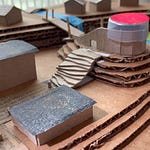This is an experiment I did in April 2024 for my science class. Below is my lab report.
Question 1: Submit your Title, Observations and Data table below.
Answer: The only data from this experiment is that the weight stayed consistent at 276 units (I couldn’t make out what units they were using. When doing the experiment at home we had grams.). I noticed that if we did the experiment twice with the same amount of water then we can find out how much gas was made during the experiment.
Question 2: What proof did you see that a chemical reaction took place?
Answer: There are two proofs. First there is the fizzing reaction in the water after the tablets enter the water. Then there is the gas produced from the reaction.
Question 3: In two or more complete sentences, explain the law of conservation of mass and how it relates to this experiment? Write your answer in the essay box below.
Answer: The law of conservation of mass explains that mass must be conserved, it can’t be created or destroyed. This is important to the experiment because It would seem that the mixture of the tablets and water would have lost energy after the reaction, however with closer examination we find that gas has been produced and that makes up for the remaining mass.
Question 4: When vinegar, an acid, is mixed with baking soda, a base, the reaction is similar to the reaction of Alka-Seltzer and water; a salt, water and carbon dioxide are produced. In two or more complete sentences, describe how your knowledge of balancing chemical equations can help you to determine the missing compound. Write your answer in the essay box below.
NaHCO3 + HC2H3O2 → ________ + H2O + CO2
Answer: From my experience I can determine that on the left side of the equation there is five hydrogen, one sodium, three carbon, and five oxygen. Thus the same amount of atoms should be on the opposite side. On the right side there is two hydrogen, one carbon, and three oxygen. Therefore we know that there are three hydrogen, one sodium, two carbon, and two oxygen atoms missing on the right side of the equation. It so happens that a molecule that fits is CH3COONa.
Question 5: In two or more complete sentences, design an extension of this experiment to determine the mass of the carbon dioxide gas that was produced. Include a hypothesis regarding the mass of the gas in grams. Write your answer in the essay box below.
Answer: I already answered this question in the Observations and data section. I would do the experiment twice. The first time I would put the water and tablets in a plastic bag. The second time I would simply put the tables into the beaker of water. Then we can subtract the second experiment's mass from the first experiment's mass and find the mass of the CO2 created.




